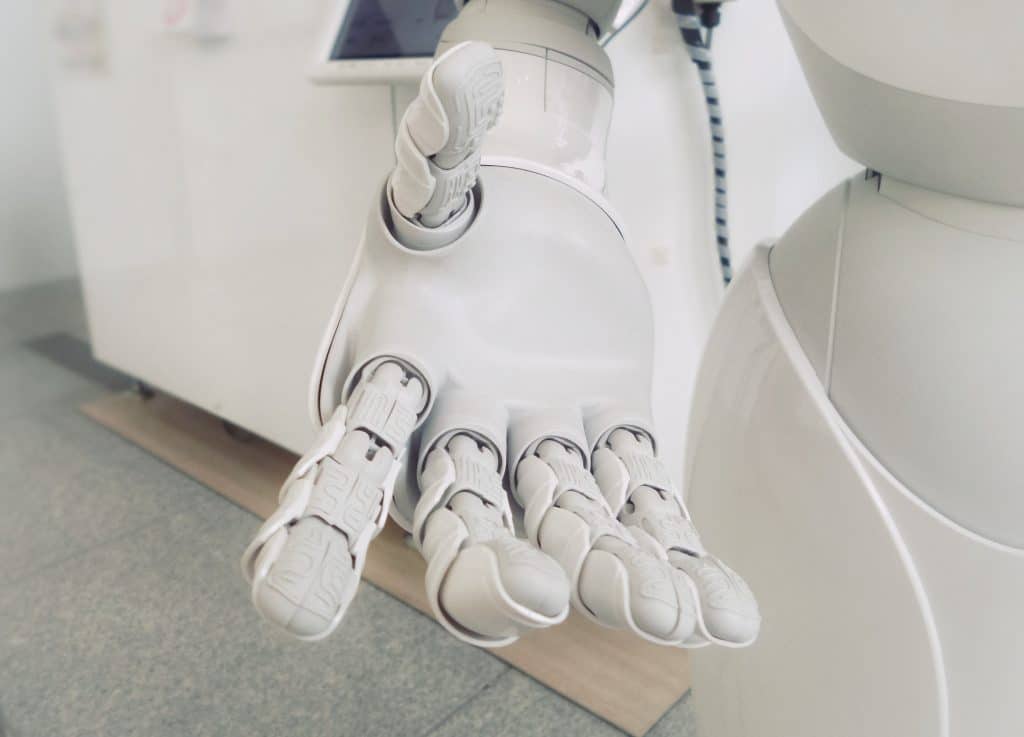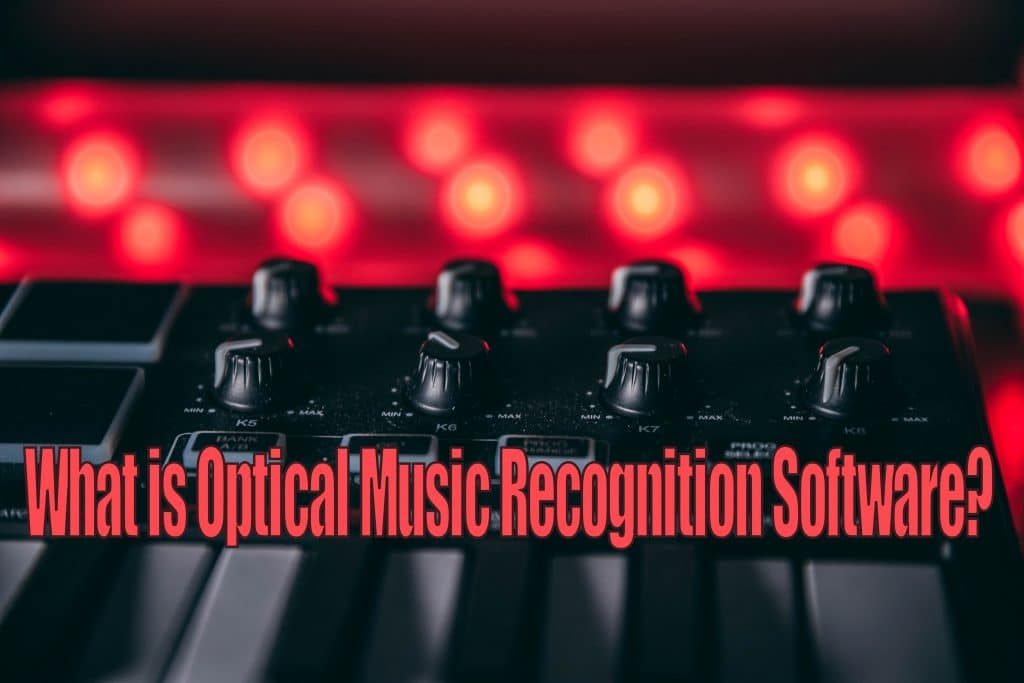We know, we know. You’re probably thinking, “Optical music what?”. Exactly. And that’s why we’re here. In this article, we’re taking a deeper look into optical music recognition software. We’re about to tell you all about its history, what it involves, and where its place is in a digital music setup. So, buckle your seatbelts! But first, I have a few questions to ask you.
Are you looking for a program that can scan physical sheet music in a notation editing program? Are you wondering how you can edit images or PDF files of sheet music?
You may not know it, but you’re looking for optical music recognition software.
But what exactly is optical music recognition?
Optical music recognition (OMR) software is a program. Essentially, in this program, a computer is taught how to read notation. Yes, that’s right. We teach your computer how to read music! Anyways… Once the computer knows how to read music, it is able to convert said music into a type of music file that other programs are able to use (like MIDI or MusicXML). In a nutshell, programs that use OMR are very different from your average notation software program. And, simply put, ScanScore is designed to do what notation programs can’t.
Now that you have a basic understanding of what optical music recognition is, let’s delve into the history of it.
A History Of Optical Music Recognition
OMR has been a field of research since the 1960s. Researchers at the Massachusetts Institute of Technology (MIT) were some of the first to delve into this software. However, their research and carry-through were not without its difficulties. Because of the severe memory limitations that computers had at the time, they could only scan a few measures at a time. This made the publishing process slow as well.
Then in 1984, a Japanese research collective from Waseda University designed something called WABOT. WABOT was the first program capable of scanning and playing back sheet music using an electric organ sound. That being said, WABOT was not just a program…It was a robot! This robot could play the organ using its hands and feet.
But as cool as robots that play organs are, I’m not sure how practical they would be when it comes to mass scanning of sheet music.

As different scanners have become more prevalent, interest grew for OMR. In 1991, the first commercially available version of OMR was released by the Musictek Corporation. It was called MIDISCAN.
As the field has grown, scanning and playing of music (the heart of OMR) has become separated from the transposing, editing, and composing of music.
Often, programs known for their editing abilities, like Finale and Sibelius, have scaled back on their OMR software in favor of other functions. Then, with the increased popularity and access to smartphone and tablet devices, a need for app compatibility grew.
This has allowed for specialized OMR programs such as ScanScore to step up and provide a key service. Advanced music scanning and digitizing has been in need for musicians since the 1960s.
All of this history is why modern-day OMR is so exciting. Programs like ScanScore have leveraged 60 years of research and technology to produce the best Optical Music Recognition software there is today, with app compatibility included.
OMR vs Other Reading Programs
You would think that with all of our technology, scanning sheet music wouldn’t be very difficult.
But if you stop to think about all the effort it takes to learn sheet music, it all becomes a little clearer. Music scanning has gone at a snail’s pace if you compare it to the software research and progress of other visual data scanners.
Fun Fact: OMR actually used to be referred to as Music Optical Character Recognition (Music OCR). OCR refers to the software needed to scan normal text documents into an editable form. Since then, programmers have realized how deep of a divide exists between normal documents and sheet music documents.
Take a look at this example. We are going to compare what a standard text doc scanner needs to know and scan c, ompared to what scanning a piece of sheet music would entail.
Text Document:
- Letters
- Numbers
- Symbols
- Spelling
- Grammar
- Layout options
Sheet Music
- Musical symbols (rhythm and pitch)
- Inverted Musical symbols
- Dots (to add half the value of the rhythm)
- Pitches
- Key signature
- Accidentals
- Time signatures
- Clefs
- Harmonic pitches
- Lyrics
- Style markings (slurs, staccato, etc)
- Dynamic markings
- Tempo markings
- Playback for all of these with different instruments
- Advanced layout options
- Variation in font styles
This is only a snapshot of all of the things sheet music involves, but with just that short list, I’m sure you can still see the difference. Fortunately, we have stepped in with ScanScore: a program dedicated to serving the needs of musicians everywhere.
Does Optical Music Recognition Play back Sheet Music?
Some OMR programs can play back sheet music. For example, ScanScore is an optical music recognition software that does play back sheet music. It can scan with the app or a scanner, and will import the image into a digital music document.
After all of this is complete, you can then have ScanScore play the music back to you. ScanScore plays all scores with a MIDI piano sound.
Does OMR Transpose Sheet Music?
Again, this depends on the program. Most optical music recognition programs don’t have transposing capabilities. Transposing is a notation software skill that can be done by advanced editing programs such as Finale or Sibelius.
What you can do is scan the sheet music with ScanScore and then export it to a MusicXML.
Then, you can open the MusicXML in your preferred program, such as Finale, and transpose it from there.
OR
You can select all of the notes in ScanScore, and use the arrow keys to transpose the notes up or down. ScanScore 2 does have transposing capabilities.
For more information on scanning images or PDFs into major programs, head on over to our blog for helpful articles explaining how it with ScanScore.
What is a MusicXML?
While we are on the topic of technology, let’s answer this question. A MusicXML is an XML file type, which focuses on containing everything inside the list of music information we showed you earlier. This type of file format is open and universally supported by all major music editing programs.
The MusicXML is a standardized score-sharing file type that was released in 2005. It’s important because it has made it much easier for composers, arrangers, and other musicians to share their access to sheet music digitally.
Here at ScanScore, we pride ourselves in our ability to quickly and accurately scan sheet music and export it into the MusicXML file format.
What is OMR’s Place in a Digital Music Setup?
The process of developing quality OMR programs has grown so complicated that most editing programs don’t even offer it. If they do, it is often a very small piece of what OMR is capable of, and tends to be inaccurate. Most musicians will need to scan, edit, and sequence audio in their digital setup. But OMR is really quite important too. Especially if you value your time.
For editing, you can use a dedicated notation program like:
- Finale
- Sibelius
- MuseScore
- Notion
- Dorico
Then, if you wanted to sequence and produce that composition, you can use a program like:
- Garage Band
- Ableton Live
- FL Studio
- Reason
- Avid Pro Tools

But in order to digitize your music to begin with, you need an OMR program like ScanScore.
Optical Music Recognition: Conclusion
We hope we helped you have gain a better understanding of what optical music recognition software is.
This field of research has been in development since the 1960s. So next time your musician friends say ‘It’s just as simple as scanning an picture!’ You can tell them that they’re wrong. And, musicians? Luckily enough, ScanScore has those 60 years of combined research and progress invested into creating an app-compatible OMR program.
If you’re interested in seeing exactly how ScanScore works, watch this video or check out the three levels of products that we offer!
Here’s a music quote of the week:
“The violin is my mistress, but the guitar is my master”
-Niccolo Paganini



ScanScore’s editing is so expansive for an OMR program.